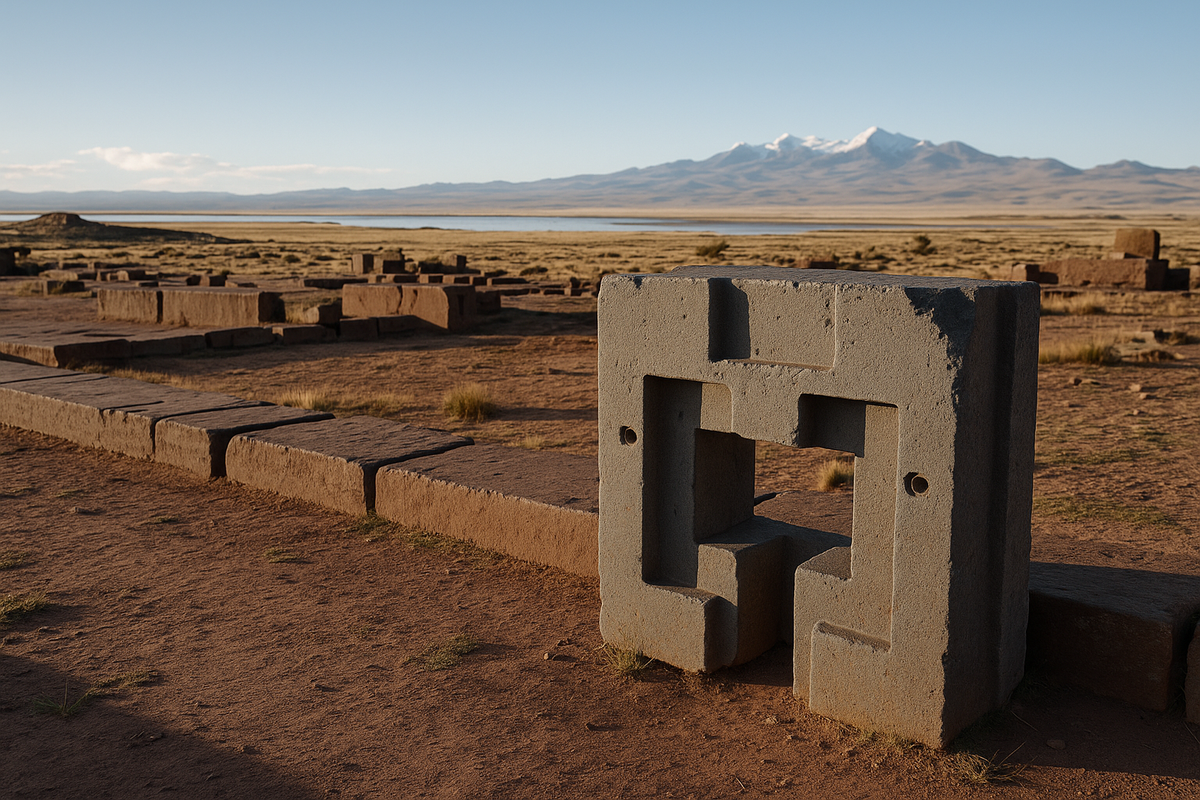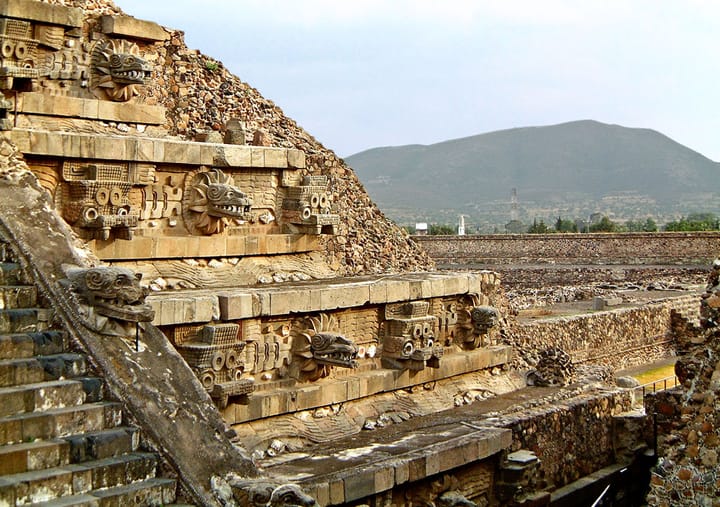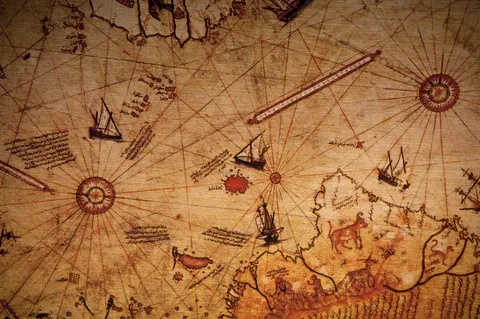Puma Punku
Part of the Tiwanaku complex on Bolivia’s Altiplano, Puma Punku is a platform mound with shattered gateways and ultra-clean andesite cuts that fuel debate about tools, transport, and purpose. Dates cluster in the Middle Horizon, with new reconstructions and surveys still revising the picture.

Quick Take
- Monumental platform within the Tiwanaku World Heritage site near Lake Titicaca. Main activity c. AD 500–1000. Live Science+1
- Famous for red sandstone monoliths and precision-cut andesite “H-blocks.” ioa.ucla.edu
- Best current reconstructions come from Alexei Vranich’s 3D model work combining historic measurements. Nature
- Largest sandstone blocks in the Plataforma Lítica are on the order of 80–130 tons. Sources lie kilometers away. Wikipedia
Quick Facts
- Type: Terraced platform mound with courts, ramps, and stone gateways
- Elevation: ~3,850 m on the Bolivian Altiplano UNESCO World Heritage Centre
- Materials: Red sandstone foundations and slabs; andesite for fine architectural elements eScholarship
- Context: Part of Tiwanaku’s ceremonial and political core, revered later by the Inca Live Science
- Excavation & study: Long research history; modern 3D reconstructions and geophysics reveal buried architecture between monuments Nature+1
Why This Matters
Puma Punku is where craft, logistics, and ceremony meet at high altitude. Its cut-stone geometry and shattered gateways invite hard questions about toolkits, quarrying, and planning. It also anchors conversations about how the Tiwanaku state organized labor and ritual landscapes across the lake basin. JSTOR
Timeline
- c. AD 500–600: Construction begins in the Middle Horizon. Wikipedia
- AD 500–1000: Tiwanaku florescence; Puma Punku remodeled in phases. Wikipedia+1
- Colonial–modern era: Severe spoliation and reuse; 19th–20th-century measurements record fragments. Nature
- 2018–present: Vranich publishes a 3D reconstruction method using historic notes and 3D prints; continuing surveys map buried features. Nature+1
Claims and Evidence
Claim 1: The platform is part of the Tiwanaku World Heritage core.
- Evidence: UNESCO listing describes Tiwanaku’s monumental stone ceremonial center at 3,850 m, including Puma Punku. UNESCO World Heritage Centre
- Assessment: Strong.
Claim 2: Very large red sandstone blocks and precision andesite elements define the complex.
- Evidence: Measurements place the largest sandstone blocks around 80–130 t; fine elements are andesite with sharp right angles and tight joints. Wikipedia+1
- Assessment: Strong for block scale and material; technique still studied.
Claim 3: Stone sources lie kilometers away, including across the lake for andesite.
- Evidence: Petrographic and geological notes in Protzen and Nair place andesite on the Copacabana Peninsula and red sandstone nearer the site. eScholarship
- Assessment: Strong for general provenance.
Claim 4: Modern reconstructions rely on century-plus of field measurements, not guesswork.
- Evidence: Vranich’s Heritage Science paper converts historic notes into parametric and 3D-printed models to test fit and layout. Nature
- Assessment: Strong; method is transparent and reproducible.
Claim 5: Puma Punku likely served as a monumental entry or processional sector within a ritual-political capital.
- Evidence: Tiwanaku syntheses and Janusek’s work on ritual landscapes support processional and hydraulic themes at major platforms. Live Science+1
- Assessment: Well supported at site scale, details debated.
Network and Influence
- Researchers: Jean-Pierre Protzen and Stella Nair on design and stonecutting; Alexei Vranich on reconstruction; John Janusek on urbanism and religion. ioa.ucla.edu+2Nature+2
- Related monuments: Akapana, Kalasasaya, Sunken Temple within Tiwanaku; Copacabana Peninsula quarries across Lake Titicaca. Live Science+1
Key Documents and Media
- UNESCO World Heritage entry for Tiwanaku. UNESCO World Heritage Centre
- Vranich, 2018, Heritage Science on 3D reconstruction and modeling dataset. Nature+1
- Protzen & Nair, 2013, The Stones of Tiahuanaco (Cotsen Institute). Cotsen Institute of Archaeology
- Janusek syntheses on ritual and political change at Tiwanaku. JSTOR
Controversies
- Tooling: Experiments suggest hard stone tools can achieve much of the precision, yet the exact toolkit sequence is still modeled. ioa.ucla.edu
- Transport: Haulage models range from sledges and earthen ramps to seasonal aids. None are fully demonstrated end-to-end at Puma Punku’s scales.
- Geopolymer claims: A minority view proposes cast stone at Tiwanaku. These papers are debated and not the consensus. ResearchGate
Open Questions
- Exact quarry-to-platform routes and slope management for the heaviest slabs
- Original count and placement of gateways on the mound’s superstructure
- Whether modular “H-blocks” formed continuous wall systems or segmented frames
- How water management tied into ritual performance on the platform
- The share of still-buried architecture between monuments
How We Are Covering This
We prioritize UNESCO and peer scholarship, then use Vranich’s reconstructions to visualize fit and sequence. We flag fringe ideas in Controversies and keep a clear line between evidence and speculation. UNESCO World Heritage Centre+1
Current Assessment
High-altitude monumentality with exceptional stone geometry. Strong evidence for Tiwanaku planning and craft. Logistics and superstructure details remain open but are narrowing with new models.
What If
Speculative entertainment lens for your readers.
What if the H-blocks are machine docking frames
Slots and steps are not ornament but attachment points.
So what: walls once carried removable tech that never survived.
What if quarry scars hide a seasonal transport trick
Freeze-thaw surfaces or reed-raft shuttles moved slabs across brief windows.
So what: the plan is climate-timed, not tool-limited.
What if miniature gateways are calibration pieces
Small, perfect gates tune measurements before full builds.
So what: metrology lives in the models, not only the monuments.
What if the platform is a sky ritual stage
Polished surfaces, water channels, and night fires create signal and reflection effects.
So what: ceremony doubles as communication.
Signals to watch
- Consistent modular ratios across H-blocks and gateway fragments
- Wear or polish bands where detachable components could have seated
- Stake grids that show large-scale transfer from master templates
- Geochemical links tying slab families to specific quarry benches
If the blocks are a protocol, the real question is not how they cut the stone. It is what the stone was meant to carry.
Credits and Further Reading
- UNESCO World Heritage Centre: Tiwanaku. UNESCO World Heritage Centre
- Vranich, A. 2018. “Reconstructing ancient architecture at Tiwanaku, Bolivia.” Heritage Science. Nature
- Protzen, J.-P., and S. Nair. 2013. The Stones of Tiahuanaco. Cotsen Institute of Archaeology, UCLA. Cotsen Institute of Archaeology
- Janusek, J. studies on Tiwanaku ritual and politics. JSTOR
- Overview on Tiwanaku timeline and monuments with recent updates. Live Science



Comments ()